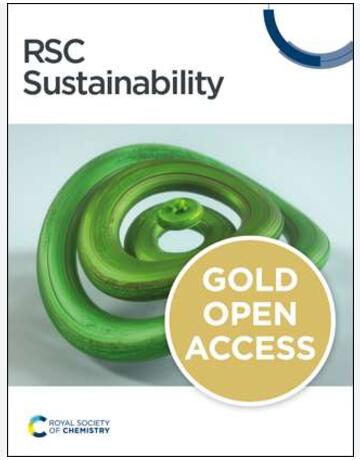The Analysis of NPP Changes under Different Climatic Zones and under Different Land Use Types in Henan Province, 2001–2020
IF 3.3
3区 环境科学与生态学
Q2 ENVIRONMENTAL SCIENCES
引用次数: 0
Abstract
Net Primary Productivity (NPP) is a crucial indicator of ecological environment quality. To better understand the carbon absorption and carbon cycling capabilities of Henan Province, this study investigates the trends and driving factors of NPP across different climatic zones and land use types. The Theil–Sen Median trend analysis method and the Mann–Kendall trend test are employed to monitor NPP changes from 2001 to 2020. The average annual NPP in Henan Province during this period was 414.61 gC·m−2·year−1, showing a significant increasing trend with a growth rate of 3.73 gC·m−2·year−1. Spatially, both the annual average NPP and its increase rate were higher in the western part of Henan compared to the eastern part, and NPP variability was more stable in the southern region than in the northern region. By classifying climatic zones and using the Geodetector method to assess NPP sensitivity to natural factors, the results show that climate and vegetation factors jointly influence NPP variations, with annual precipitation being the primary natural factor affecting NPP trends in Henan Province from 2001 to 2020. By analyzing the NPP gain and loss matrix, the impact of land use changes on NPP was evaluated. Forests had the highest average annual NPP at 483.52 gC·m−2·year−1, and the conversion of arable land to urban areas was identified as the primary land change type leading to NPP reductions. In the subtropical zone of Henan, forests, croplands, and grasslands exhibited higher NPP values and increase rates compared to those in the warm belt. This study provides new insights into the spatial variation of NPP caused by changes in climatic zones and land use types.2001-2020 年河南省不同气候带和不同土地利用类型下的 NPP 变化分析
净初级生产力(NPP)是衡量生态环境质量的重要指标。为了更好地了解河南省的碳吸收和碳循环能力,本研究探讨了不同气候带和土地利用类型下净初级生产力的变化趋势和驱动因素。采用 Theil-Sen 中值趋势分析法和 Mann-Kendall 趋势检验法监测 2001-2020 年的 NPP 变化。在此期间,河南省的年均 NPP 为 414.61 gC-m-2-年-1,呈显著上升趋势,增长率为 3.73 gC-m-2-年-1。从空间上看,河南省西部地区的年均 NPP 及其增长率均高于东部地区,且南部地区的 NPP 变率比北部地区更稳定。通过划分气候带和使用 Geodetector 方法评估 NPP 对自然因子的敏感性,结果表明气候和植被因子共同影响 NPP 的变化,其中年降水量是影响河南省 2001-2020 年 NPP 变化趋势的主要自然因子。通过分析 NPP 增减矩阵,评估了土地利用变化对 NPP 的影响。森林的年均 NPP 最高,为 483.52 gC-m-2-年-1,而耕地向城市地区的转化被认为是导致 NPP 降低的主要土地变化类型。与温暖带相比,河南亚热带地区的森林、耕地和草地表现出更高的 NPP 值和增加率。这项研究为了解气候带和土地利用类型的变化导致的 NPP 空间变化提供了新的视角。
本文章由计算机程序翻译,如有差异,请以英文原文为准。
求助全文
约1分钟内获得全文
求助全文
来源期刊

Sustainability
ENVIRONMENTAL SCIENCES-ENVIRONMENTAL SCIENCES
CiteScore
6.80
自引率
20.50%
发文量
14120
审稿时长
17.72 days
期刊介绍:
Sustainability (ISSN 2071-1050) is an international and cross-disciplinary scholarly, open access journal of environmental, cultural, economic and social sustainability of human beings, which provides an advanced forum for studies related to sustainability and sustainable development. It publishes reviews, regular research papers, communications and short notes, and there is no restriction on the length of the papers. Our aim is to encourage scientists to publish their experimental and theoretical research relating to natural sciences, social sciences and humanities in as much detail as possible in order to promote scientific predictions and impact assessments of global change and development. Full experimental and methodical details must be provided so that the results can be reproduced.
 求助内容:
求助内容: 应助结果提醒方式:
应助结果提醒方式:


